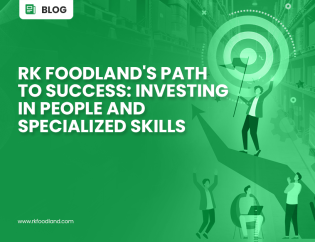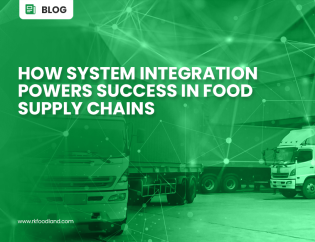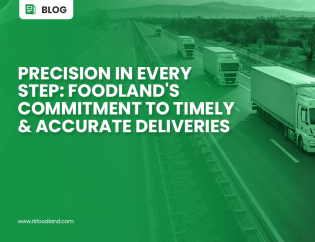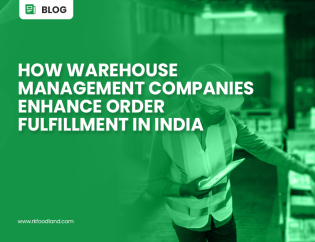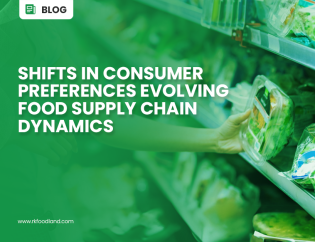
6. Evaluate your strengths and weaknesses
The supply chain is only as strong as its weakest link. Identifying areas for improvement can be challenging, without access to precise real-time and historical data. By implementing automated, supply chain solutions, businesses can achieve granular visibility. That would mean segmenting the supply chain to extract and analyze accurate data from various segments within the supply chain like warehousing or transportation to identify its pain points that need addressing. Evaluation as a process helps to strengthen the end-to-end fulfillment strategy while saving businesses time and money.
7. Simplify the supply chain design
A convoluted supply chain can mean that there are more potential for things to go wrong. Food brands with diverse suppliers and processes runs the danger of losing focus causing delays in sourcing, manufacturing, and transportation. Supply chain complexity is one of the major issues firms confront, according to Michigan State University research. Operating in various consumer markets involves numerous suppliers, which means more workflows, regulatory requirements, and vulnerable links. Supply chains can easily become entangled and convoluted, undermining efficiency. Businesses should analyze the entire supply chain to see where it may be simplified. Simplifying procedures can lead to cost savings, increased efficiency, and higher product quality. A lean supply chain is better prepared to deal with unexpected challenges. Its processes frequently improve overall performance, quality, reduces expenses, and increases responsiveness. A high-level audit of operations will reveal areas for improvement, resulting in shorter lead times and lower prices. Technology can help firms manage supply chain issues and streamline operations. Combining these factors can lead to happier consumers, which is the goal of every food brand.
8. Increase Transparency to save costs
Transparency extends beyond supply chain visibility, as confirmed by a Harvard Business Review report that reveals cost reductions of up to 20%. To better understand supply chain participants and threats, organizations can now use internal and external data sources. Mobile technology can track compliance or employment data instead of on-site or third-party audits. Additionally, they can track supplies from their point of origin to the producer, and then the finished products from the manufacturer to the end consumer, assisting in the confirmation of quality and preventing fraud. While transparency can educate and engage clients it can also be used to reveal potential operational changes, promote good corporate responsibility, strengthen brands, and mitigate future events.
9. Transform digitally
Supplier technology helps food brands build a future-ready supply chain while boosting accuracy, compliance, and visibility. Analytics can help organizations identify market patterns and forecast future demand. Business risks can also be addressed to ensure business continuity and provide end-to-end visibility. According to Forbes, 50% of organizations feel technology has a significant impact on supply chain, logistics, and transportation operations. Digital supply chains rely on ubiquitous data access. They can boost dependability, agility, and efficiency by facilitating cross-platform cooperation and communication. Traditional supply chains must adapt to new digital realities or risk being left behind. A digital operational model incorporates digital capabilities across governance, processes, data management, and IT that enables process integration and standardization.
10. Consider working with a specialist
Before assembling a team to fill in the gaps, it is critical to understand the supply chain constraints. Consultants help negotiate the existing supply chain network’s uncertainty. They can help with supply chain technology, 3PL and 4PL outsourcing, warehouse and transportation management, network analysis, Lean distribution, and more. Food brands should consider collaborating with a supply chain specialist who can build a fit-to-purpose business strategy to reduce total value chain costs while improving the performance of the supply chain and manufacturing and distribution costs.
According to a report by the UK-based market research firm Technavio, the 3PL market in India is poised to grow by US$10.74 billion in the period 2021-2025, progressing at a compound annual growth rate (CAGR) of almost 8%. Because supply chains are so complicated and unique to each business, consultants can assist uncover gaps between business strategy and supply chain design. A consultant can help traverse the stages and provide guidance to ensure the successful implementation of a supply chain relationship.
As we transition into the new year we can together look forward to the challenges and changes the new year brings by embracing these 10 resolutions offered to help supply chains prepare for a productive and efficient year.
Missed the first 5 resolutions? – Click here and read through the list
